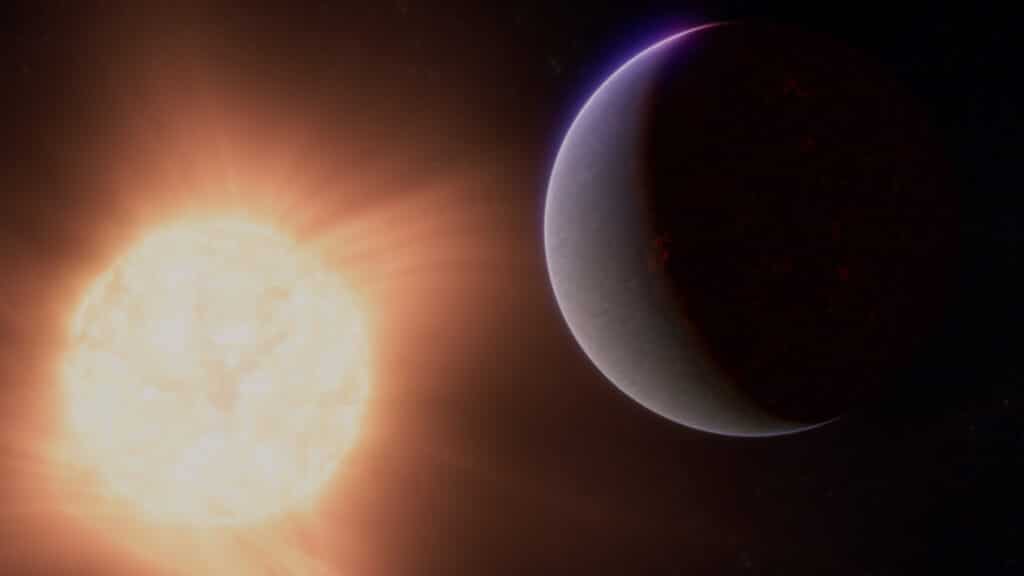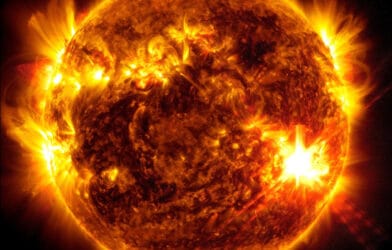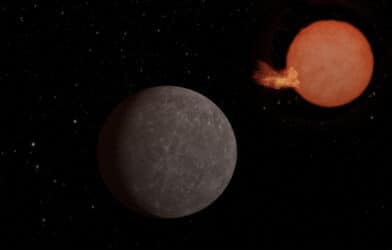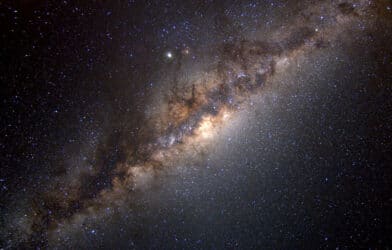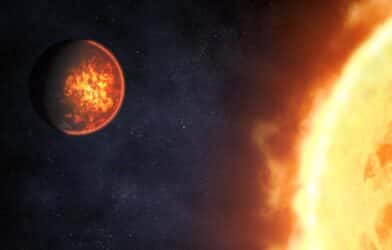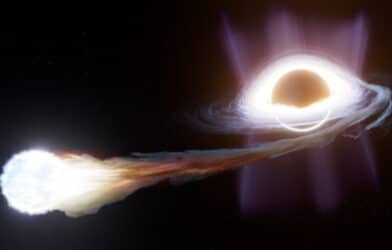In a thrilling cosmic discovery, researchers using NASA’s James Webb Space Telescope have found compelling evidence of an atmosphere surrounding a distant rocky planet known as 55 Cancri e. This super-hot, super-Earth is located 41 light-years from our home planet and may be shrouded in gases that are bubbling up from its molten surface.
While scientists have previously detected atmospheres on gigantic gas planets, this marks the first time they’ve found strong signs of an atmosphere on a rocky world outside our solar system. The discovery, published in the journal Nature, opens up exciting new avenues for studying Earth-like planets beyond our cosmic neighborhood.
“Webb is pushing the frontiers of exoplanet characterization to rocky planets,” says lead study author Renyu Hu, from NASA’s Jet Propulsion Laboratory. “It is truly enabling a new type of science.”
55 Cancri e, also known by the name Janssen, is what astronomers call a super-Earth. It’s a rocky planet larger than Earth but smaller than ice giants like Neptune. Imagine a world nearly twice the size of our own, with a density slightly greater than Earth’s, likely made up of similar materials to the rocky planets we’re familiar with.
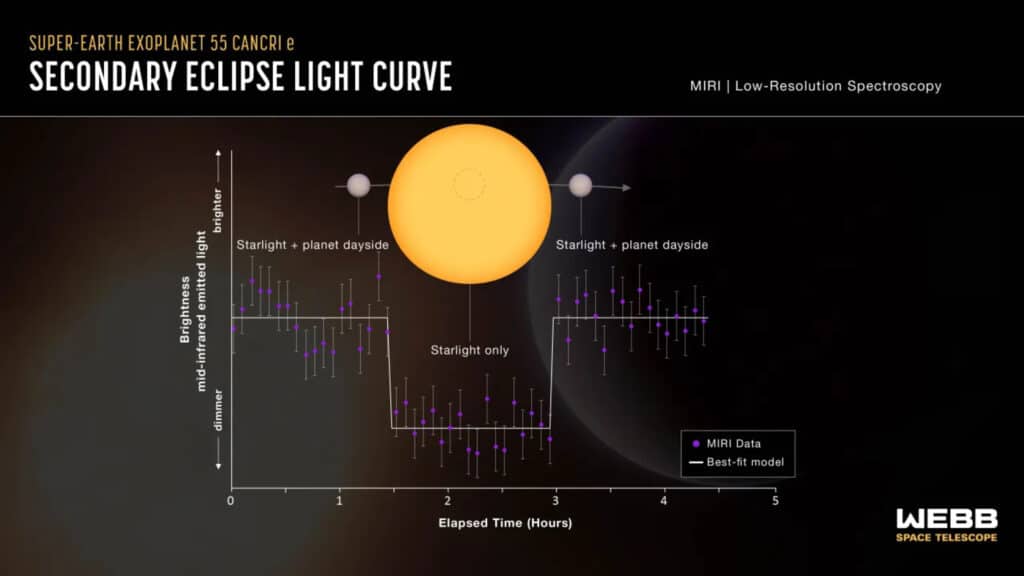
But that’s where the similarities end. 55 Cancri e is so close to its star that it completes an orbit in just 18 hours (compare that to Earth’s leisurely 365-day journey around the Sun). At that proximity, the planet’s surface is a hellish landscape, likely an ocean of magma with temperatures reaching a scorching 4,000 degrees Fahrenheit. The planet is also likely “tidally locked,” meaning one side always faces the star while the other remains in perpetual darkness.
Despite numerous observations over the years, astronomers have been unsure whether 55 Cancri e could maintain an atmosphere under such extreme conditions. Previous data hinted at a substantial atmosphere rich in volatile compounds like oxygen, nitrogen, and carbon dioxide, similar to Earth’s air. But another possibility remained: the planet could be bare, with only a thin haze of vaporized rock.
“I’ve worked on this planet for more than a decade,” explains study co-author Diana Dragomir, an exoplanet researcher at the University of New Mexico. “It’s been really frustrating that none of the observations we’ve been getting have robustly solved these mysteries. I am thrilled that we’re finally getting some answers!”
Detecting a Cosmic Fingerprint
To solve the mystery, the team turned to Webb’s powerful infrared vision. By precisely measuring the planet’s light at specific wavelengths, they could detect the “fingerprints” of different substances.
The first clue came from the planet’s temperature. If 55 Cancri e were a bare rock, it would be much hotter than the team’s measurements indicated.
“Instead, the MIRI data showed a relatively low temperature of about 2,800 degrees Fahrenheit,” notes Hu. “This is a very strong indication that energy is being distributed from the dayside to the nightside, most likely by a volatile-rich atmosphere.”
Researchers also spotted another telltale sign in the data: a dip in brightness between certain wavelengths that matches what you’d expect from an atmosphere containing carbon monoxide or carbon dioxide. A bare rock wouldn’t leave that specific signature.
A Hellish Water World?
The team suspects the mysterious atmosphere is emerging from the planet’s interior.
“The primary atmosphere would be long gone because of the high temperature and intense radiation from the star,” says study co-author Aaron Bello-Arufe, from NASA’s Jet Propulsion Laboratory. “This would be a secondary atmosphere that is continuously replenished by the magma ocean. Magma is not just crystals and liquid rock; there’s a lot of dissolved gas in it, too.”
While 55 Cancri e is far too hot to host life as we know it, studying its extreme environment could help us understand the early history of rocky planets in our own backyard. Earth, Venus, and Mars are thought to have been molten worlds long ago, and 55 Cancri e may offer a glimpse into that fiery past.
As Webb continues to unveil the cosmos in unprecedented detail, astronomers are excited to explore new frontiers in the search for habitable worlds.
“Ultimately, we want to understand what conditions make it possible for a rocky planet to sustain a gas-rich atmosphere: a key ingredient for a habitable planet,” concludes Hu.
